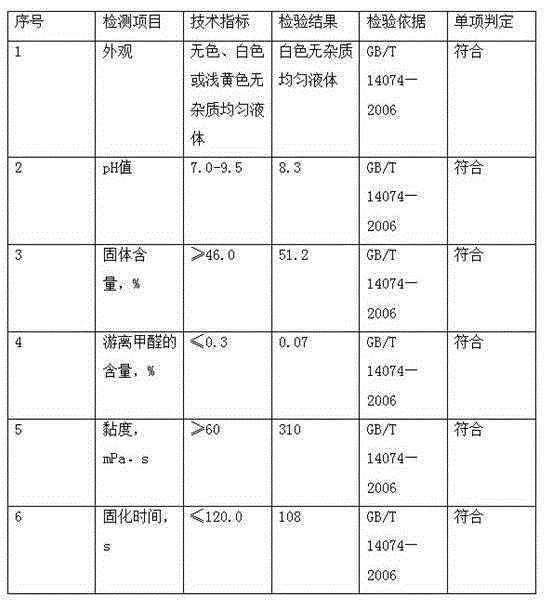Production method for low-formaldehyde solid wood composite floor
A technology of solid wood composite floor and production method, which is applied in the direction of bonding of wooden veneers, chemical instruments and methods, aldehyde/ketone condensation polymer adhesives, etc. The effect of low residue and high bond strength
- Summary
- Abstract
- Description
- Claims
- Application Information
AI Technical Summary
Problems solved by technology
Method used
Image
Examples
Embodiment l
[0024] A method for producing low-formaldehyde solid wood composite flooring, the steps are as follows:
[0025] (1) Rotary sheet of wood board: use a rotary cutter to cut the board to obtain a veneer, and pick out unqualified boards with insect eyes, decay, and excessive defects;
[0026] (2) Drying: Dry the veneer with a dryer to reduce the moisture content of the board to below 12%;
[0027] (3) Repair: Repair the defects or blemishes on the veneer including natural cracks, cracks, knots, skins and knots;
[0028](4) Material selection: Among the obtained veneers, the veneer used for the plywood is made of oak veneer; the middle plate and bottom plate are made of camphor veneer;
[0029] (5) Glue application: Use a glue applicator to apply glue to the surface plate, middle plate and bottom plate and assemble the billet. The glue solution is low-aldehyde urea-formaldehyde resin glue, and the amount of glue on one side is 220-235g / m 2 ;
[0030] (6) Pre-pressing: pre-press...
Embodiment 2
[0037] A method for producing low-formaldehyde solid wood composite flooring, the steps are as follows:
[0038] (1) Rotary sheet of wood board: use a rotary cutter to cut the board to obtain a veneer, and pick out unqualified boards with insect eyes, decay, and excessive defects;
[0039] (2) Drying: Dry the veneer with a dryer to reduce the moisture content of the board to below 12%;
[0040] (3) Repair: Repair the defects or blemishes on the veneer including natural cracks, cracks, knots, skins and knots;
[0041] (4) Material selection: Among the obtained veneers, the veneer used for the plywood is made of ash veneer; the middle board and bottom board are made of eucalyptus;
[0042] (5) Glue application: Use a glue applicator to apply glue to the surface plate, middle plate and bottom plate and assemble the billet. The glue solution is low-aldehyde urea-formaldehyde resin glue, and the amount of glue on one side is 220-235g / m 2 ;
[0043] (6) Pre-pressing: pre-press th...
Embodiment 3
[0050] A method for producing low-formaldehyde solid wood composite flooring, the steps are as follows:
[0051] (1) Rotary sheet of wood board: use a rotary cutter to cut the board to obtain a veneer, and pick out unqualified boards with insect eyes, decay, and excessive defects;
[0052] (2) Drying: Dry the veneer with a dryer to reduce the moisture content of the board to below 12%;
[0053] (3) Repair: Repair the defects or blemishes on the veneer including natural cracks, cracks, knots, skins and knots;
[0054] (4) Material selection: Among the obtained veneers, the veneers used for the plywood are made of oak, ash, mulberry, Burmese wood, pineapple lattice or teak; the middle and bottom boards are made of birch ;
[0055] (5) Glue application: Use a glue applicator to apply glue to the surface plate, middle plate and bottom plate and assemble the billet. The glue solution is low-aldehyde urea-formaldehyde resin glue, and the amount of glue on one side is 220-235g / m 2...
PUM
 Login to View More
Login to View More Abstract
Description
Claims
Application Information
 Login to View More
Login to View More - R&D
- Intellectual Property
- Life Sciences
- Materials
- Tech Scout
- Unparalleled Data Quality
- Higher Quality Content
- 60% Fewer Hallucinations
Browse by: Latest US Patents, China's latest patents, Technical Efficacy Thesaurus, Application Domain, Technology Topic, Popular Technical Reports.
© 2025 PatSnap. All rights reserved.Legal|Privacy policy|Modern Slavery Act Transparency Statement|Sitemap|About US| Contact US: help@patsnap.com

